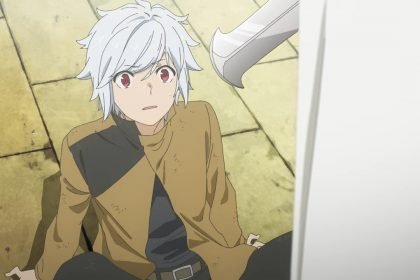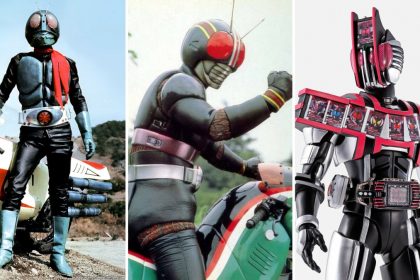Japanese mythology is a rich tapestry of ancient beliefs and folklore that has captivated people for centuries. Its influence can be seen in various forms of Japanese art and entertainment, including anime and manga. These popular mediums often draw inspiration from the vast pantheon of gods, goddesses, yokai (supernatural creatures), and mythical tales that make up Japanese mythology. By incorporating these mythological elements, anime and manga series create captivating narratives that not only entertain but also provide a gateway to the cultural heritage and traditions of Japan. In this article, we will explore the fascinating world of Japanese mythology in anime and manga, examining its origins, its presence in popular series, and its cultural impact both within Japan and around the world.
Japanese Mythology: An Overview
Before diving into the realm of anime and manga, it’s essential to have an understanding of Japanese mythology itself. With roots dating back thousands of years, Japanese mythology is a complex tapestry of beliefs and legends that have shaped the country’s cultural identity. At its core, Japanese mythology is deeply intertwined with nature and the spiritual realm. It encompasses various gods and goddesses who govern different aspects of the world, as well as mythical creatures and legendary heroes who embark on epic quests.
One of the most well-known elements of Japanese mythology is the Shinto religion, which venerates a multitude of deities known as kami. These kami are often associated with specific natural features such as mountains, rivers, and trees. For example, Amaterasu, the goddess of the sun, holds a significant place in Japanese mythology and is considered the ancestor of the Imperial family. Other prominent deities include Susanoo, the god of storms and the sea, and Tsukuyomi, the god of the moon.
Japanese Mythology in Anime and Manga
The influence of Japanese mythology on anime and manga is undeniable. These mediums provide a platform for artists and storytellers to reimagine and reinterpret the rich mythological traditions of Japan. By incorporating elements of Japanese mythology, anime and manga series infuse their narratives with a sense of wonder, magic, and cultural depth.
In many anime and manga series, gods and goddesses from Japanese mythology take center stage as key characters. They are often portrayed with distinct personalities and abilities, engaging in epic battles and forging alliances with human protagonists. These portrayals bring the mythological figures to life, allowing audiences to connect with the ancient stories in a new and captivating way.
Moreover, anime and manga explore the realm of yokai, supernatural creatures deeply rooted in Japanese folklore. These mythical beings range from mischievous spirits to powerful entities, each with its own unique traits and characteristics. By featuring yokai in their narratives, anime and manga not only pay homage to Japanese mythology but also tap into the sense of mystery and enchantment that surrounds these creatures.
Examples of Anime and Manga with Mythological Themes
Numerous anime and manga series have embraced Japanese mythology, incorporating its themes, characters, and stories into their narratives. Let’s explore some notable examples:
1. “Noragami”
“Noragami” is a popular anime and manga series that revolves around the adventures of Yato, a minor god in Japanese mythology. Yato is a deity who dreams of amassing a vast number of followers and becoming a well-known god. The series delves into the complexities of the god-human relationship, exploring themes of faith, friendship, and the blurred lines between the human and spiritual realms. With its dynamic characters and engaging storyline, “Noragami” seamlessly weaves together elements of Japanese mythology and modern-day urban fantasy.
2. “Kamisama Kiss”
“Kamisama Kiss” follows the story of Nanami Momozono, a high school girl who unexpectedly becomes a deity after inheriting a shrine. Nanamifinds herself entangled in the world of gods and spirits, navigating her newfound divine powers and the responsibilities that come with them. The series draws heavily from Japanese mythology, featuring gods, yokai, and supernatural creatures as key characters. Through Nanami’s journey, “Kamisama Kiss” explores themes of self-discovery, love, and the delicate balance between the human and divine realms.
3. “Natsume’s Book of Friends”
“Natsume’s Book of Friends” tells the story of Takashi Natsume, a young boy who can see spirits and yokai. He inherits a book from his grandmother that contains the names of yokai she defeated, and with it, the ability to command these spirits. The series beautifully portrays the coexistence between humans and yokai, delving into themes of empathy, friendship, and the connections forged across different worlds. Drawing inspiration from Japanese mythology, “Natsume’s Book of Friends” offers a heartfelt exploration of the supernatural and the human experience.
Real-Life Locations and Mythological Connections
The allure of Japanese mythology in anime and manga extends beyond the fictional realm. Real-life locations in Japan serve as tangible connections to the mythological world, adding depth and authenticity to the storytelling. Two notable examples are Mount Fuji and Kyoto.
Mount Fuji: The Sacred Mountain
Mount Fuji, an iconic symbol of Japan, holds great significance in Japanese mythology. It is often considered a sacred mountain and is believed to be the dwelling place of gods and spirits. In anime and manga, Mount Fuji is frequently depicted as a powerful and mystical location, serving as a backdrop for pivotal moments in the story. The awe-inspiring presence of Mount Fuji adds a sense of grandeur and spiritual resonance to the narratives, inviting viewers and readers to explore its mythological connections.
Kyoto: A Hub of Mythological Sites
The city of Kyoto, with its rich cultural heritage, is home to numerous shrines and temples that have deep-rooted connections to Japanese mythology. Anime and manga series often showcase the beauty and significance of Kyoto’s mythological sites, incorporating them into the narratives as places of spiritual connection and personal growth. Fushimi Inari Taisha, known for its vibrant torii gates, and Kiyomizu-dera, a renowned Buddhist temple, are just a few examples of the mythological landmarks depicted in anime and manga. By featuring these real-life locations, anime and manga series provide fans with the opportunity to immerse themselves in the cultural tapestry that inspired their favorite stories.
Cultural Impact and Global Appeal
The inclusion of Japanese mythology in anime and manga has had a profound cultural impact both within Japan and around the world. These captivating narratives have introduced audiences to the rich cultural heritage of Japan, fostering an appreciation for its mythological traditions. Anime and manga serve as a medium through which younger generations can engage with their cultural roots and preserve the stories and beliefs of Japanese mythology for future generations.
On a global scale, anime and manga with mythological themes have garnered a dedicated following. The unique blend of fantasy, cultural exploration, and captivating storytelling has captivated audiences from diverse backgrounds. Series like “Naruto” have achieved international success, drawing fans who are fascinated by the intricate mythological elements woven into their narratives. The global appeal of these series demonstrates the universal fascination with mythology and the power of storytelling to transcend cultural boundaries.
Conclusion
Japanese mythology holds a significant place in the realm of anime and manga, infusing these mediums with a sense of enchantment, cultural depth, and captivating narratives. By incorporating elements of Japanese mythology, anime and manga series provide a gateway to the rich tapestry of ancient beliefs and folklore that have shaped Japan’s cultural identity. From gods and goddesses to yokai and mythical creatures, the mythological world comes alive through the vibrant characters and immersive storytelling of these popular series.
Through examples such as “Noragami,” “Kamisama Kiss,” and “Natsume’s Book of Friends,” we see how Japanese mythology is seamlessly integrated into the narratives, exploring themes of faith, friendship, self-discovery, and the delicate balance between the human and divine realms. These series not only entertain but also educate audiences on the complexities of Japanese mythology, fostering an appreciation for the country’s cultural heritage.
Real-life locations such as Mount Fuji and Kyoto further enhance the mythological connections in anime and manga. Mount Fuji, considered a sacred mountain, and Kyoto, with its mythological landmarks, serve as tangible links to the ancient beliefs and legends. By featuring these locations, anime and manga series provide a visual and cultural immersion for fans, deepening their connection to the mythological world.
The cultural impact of Japanese mythology in anime and manga extends beyond Japan’s borders. These series have gained a global following, captivating audiences from diverse backgrounds. The universal fascination with mythology and the power of storytelling to transcend cultural boundaries are evident in the international success of series like “Naruto” and “Attack on Titan.” As fans engage with the mythological elements, they gain a deeper understanding and appreciation for Japanese culture and heritage.
In conclusion, Japanese mythology in anime and manga bridges the gap between ancient beliefs and contemporary storytelling, captivating audiences with its blend of fantasy, cultural exploration, and captivating narratives. Through the medium of anime and manga, the mythological world of Japan comes alive, inviting viewers and readers on a captivating journey into the depths of its rich cultural heritage.













